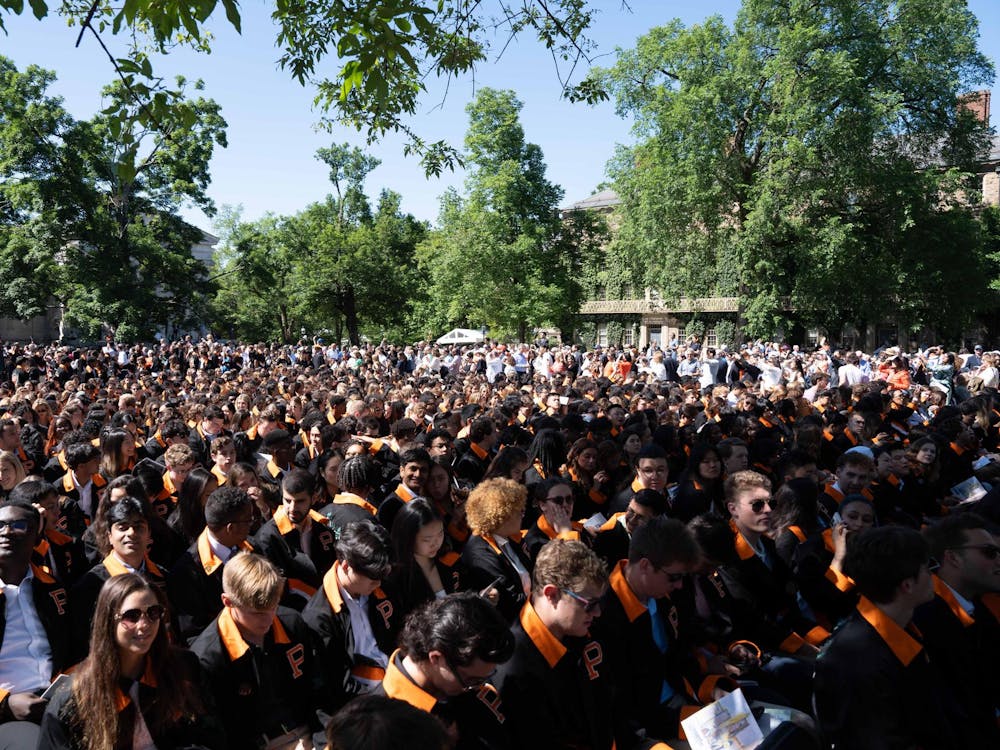In July and September of this year, the Princeton Alumni Weekly celebrated the long life and upcoming demolition of the Butler Apartments: the barrack-like tract of small frame houses, first opened on Christmas in 1946, that replaced Princeton’s polo field. Apparently made of ticky-tacky, these little shacks have housed generations of Princeton students. At first many married returnees from the Second World War lived in them, but from the 1960s on, Butler has been graduate territory.
The Butler Apartments were designed to last only a few years, and they look it. In 1975, when my wife and I arrived in Princeton, we couldn’t believe that students lived there — especially when we heard their stories about feeble heaters, leaky floors and paper-thin walls. Over time, however, we also learned about Butler’s low rents and high spirit of community. It no longer surprises us that when former graduate students visit us, in the patch of faculty houses across from Butler, they find time for nostalgic trips across Hartley Avenue to take pictures of the units where they shivered through New Jersey winters.
This summer, the University plans to demolish Butler: The shacks, and the streets named after dead admirals, will become green space. This is all part of a larger set of changes. Until recently, Hibben and Magie, a grim pair of buildings that looked as if they had floated to Princeton from East Germany, loomed over Lake Carnegie. Now the handsome new Lakeside buildings will provide low-rise apartments, costly but comfortable, for just over 700 graduate students. Once Butler and Stanworth are demolished, however, the total number of graduate student residences will be smaller than it was. A few years ago, the University could house something like 80 percent of the graduate student body — pretty much everyone who wanted a place. In the future, it aims to accommodate 70 percent.
Students who come to Princeton for graduate study buck a generational trend. Back in the ’70s and ’80s, when “Wolfen” and “Escape from New York” seemed like documentaries, Princeton was attractive. It offered calm and safety. But the world has moved on, and urban crime rates have plummeted. Nowadays, graduates of elite colleges and universities stream toward city lights like highly educated lemmings. Our graduate students — products of very similar institutions — make a counter-cultural choice when they decide to spend their 20s in central New Jersey.
Why do this? Princeton has a fine faculty — but so do Harvard and Yale, Columbia and Berkeley. Princeton offers good stipends — but some of our rivals provide better ones. The special thing that Princeton has to offer graduate students is similar to the special thing it offers undergraduates: community. Come to Princeton, we tell prospective students, and you’ll join a close-knit graduate student body and work intensively, day after day and week after week, with your teachers. That’s the only reason why we build apartments in the first place. To quote the graduate housing website: “University housing is central to Princeton’s goal of creating a community of scholars.”
The sentiment sounds properly warm and fuzzy. But the policies behind it don’t. In fact, we plan to offer students places for their first three years on campus, with some possibility of a fourth. Go away to carry out your dissertation research — as many students do — or simply stay on while you’re working on the dissertation, often with less financial support, and Mother Princeton hands you an eviction notice. So much for community.
The University authorities have their reasons, of course. They emphasize the difficulty of paying for the endless repairs needed to keep the Butler houses from collapsing into the Jersey mud they rest on. They note that the buildings are neither adapted for people with disabilities nor friendly to the environment. And they point out that in housing 70 percent of graduate students, they fulfill the University’s plans and match the performance of sister institutions.
But the practical reasons for tearing Butler down don’t seem more urgent now than they have been for decades. The policy of housing 70 percent was framed long ago, at a time when Princeton was very different: a time when old houses were rented cheaply to students instead of being torn down to make way for McMansions — and when the cities weren’t equipped with warm beacons like the one at the end of Daisy’s pier. Saying that Princeton does as well as peer institutions is not an argument at all. Given our resources, we should be cleaning their clocks and forcing them to do better — as we did, so admirably, when it came to financial aid for undergraduates.

If students have to pay high rents to live in Princeton — and the rents in the new buildings have to be high, to cover their costs — some will decide not to come at all. Others will come, but they will spend most or all of their Princeton years in New York or Philadelphia. And a good many more senior students will decide, understandably, that it makes more sense to pay an exorbitant rent in a city that boasts more than three bars and coffee shops, rather than a very high one in an apartment complex on a New Jersey road that doesn’t have sidewalks. Once again, so much for community.









